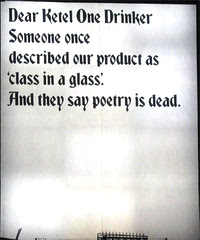Let me start by admitting that it's been awhile. I haven't picked up an issue of Sports Illustrated in years. But when my wife enthusiastically showed me the new issue, demanding that we find a De La Hoya vs. Mayweather party to go to, I didn't exactly feel a nostalgic twinge for the old mag. I felt sad.
I remember SI as the National Geographic of sports photography. Huge spreads of unbelievable action shots that made me dissect a

slide into third base right down to the dirt and laces in Rickey Henderson's cleats. But this was not the SI of old, or maybe it was. The same tired call-out bars and text formatting with even weaker images of ballplayers in mid-swing and sweater-wearing coaches yelling from the sidelines.
Let's face it, print has changed. Since USA Today started mimicking the web, almost every publication has tried to incorporate exciting graphics and innovative sidebar shapes into their spreads. And while many certainly miss the mark, or overshoot by a long shot, just as many have found a balance between serious, engaging content and visual excitement.
Take ESPN The Magazine, for example. Large format and slightly updated paper quality, along with gutter-breaking graphics and punchy writing have made this late-comer the standard. And it's not just about going after a younger audience here, it's about having an audience, period. You're parents may read The Times, but they're likely reading it online these days. We're used to the medium, and we expect better things. Speaking of The Times, even they find a way to make a fossil look current with information hierarchy and line rules.

I still remember the inaugural edition of ESPN The Magazine. I remember thinking it was too flashy and demanding. But it beat me down, and I'm thankful for it. It was an early predecessor to what is now becoming the fascinating re-interpretation of magazine design. It's not all copy and photos in a standard layout anymore. It's an experience of thoughtful, tactile, holistic design that rivals the web, rather than cowers in its limitations. Anyone whose picked up a recent copy of Esquire knows what I mean.
And sports itself has gotten bigger than the game in the last few decades. Now we know player's parents almost as much as we know their stats. We know about their record deals and charity work, and we follow them onto network news after retirement. And this isn't always just obsession, some of this stuff is damn interesting.
SI isn't just holding on to its principles. A visit to their
overbearing circus of a site lets you know up front that this is a communication of the CNN network now, not exactly a pioneer in engaging content and design. Sigh.

 Many Jakus bags are available in Chicago at Hazel.
Many Jakus bags are available in Chicago at Hazel.

















